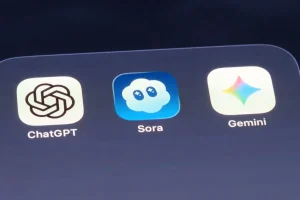OpenAI Launches Music AI, Text-to-Film AI, Tencent’s Real-Time 3D AI, and More Updates

The Rise of AI in Creative Fields: Recent Innovations
AI technology is evolving rapidly, impacting various sectors, including music composition, web browsing, video generation, and even global risk management. Recent advances in AI indicate a shift in how we appreciate creativity and problem-solving capabilities. Here’s a deep dive into some of the latest innovations that are shaping our digital landscape.
DIA: The Next-Gen AI Browser
A new browser named DIA has officially launched on Mac OS, promising to enhance productivity. Designed as a lightweight, AI-driven tool, DIA integrates an intelligent assistant into a familiar tabbed interface. Unlike traditional browsers, DIA is capable of reading content across open tabs, reasoning through information, and executing actions in real-time.
Key Features of DIA
- Context Awareness: For instance, if you have multiple Airbnb tabs open, DIA can provide a comprehensive comparison of prices, amenities, and cancellation policies.
- Article Summarization: Need a quick summary of lengthy articles? DIA does that seamlessly, helping users streamline their reading.
- Privacy-Focused: Users have control over which tabs the AI can access, ensuring sensitive information remains protected.
Currently, DIA is available for Apple Silicon Macs, with plans for a Windows version in development. This makes it one of the first browsers to feel like a genuine AI co-pilot for users who juggle numerous tabs daily.
Advancements in Video Generation
While web browsing experiences are becoming more intuitive, the film industry is also experiencing a shift. Hollow Scene, a collaborative effort by HKUS and Ant Group, introduces an open-source cinematic video generator that crafts multi-shot narratives with consistent elements like characters, props, and settings.
Features of Hollow Scene
- Understanding Cinematic Cues: The model recognizes various filmmaking techniques, enabling coherent storytelling across scenes. It can execute shots like a shot-reverse-shot and handle camera scale transitions with ease.
- Persistent Memory: Characters and elements remain consistent from one frame to the next, enhancing narrative continuity.
- Flexible Prompt Formats: Users can provide global scene captions and directorial cues, allowing for creative control without needing to micromanage each frame.
The team behind Hollow Scene has worked on ensuring that its architecture supports both high-speed and high-quality outputs. However, users can choose between a more resource-intensive version or a faster variant that compromises slightly on stability.
Real-Time AI Video Models
Craya has introduced Craya Realtime, an auto-regressive video model designed for real-time video generation. Using a method known as self-forcing, Craya transforms a diffusion model into an auto-regressive system that predicts frames sequentially.
Highlights of Craya Realtime
- Speed and Responsiveness: Capable of generating 11 frames per second on specialized hardware, Craya caters to studios with its high-performance requirements.
- Interactive Features: Users can modify prompts during generation, allowing for immediate creative feedback and adaptations on the fly.
With the technological advancements in both real-time video generation and cinematic storytelling, the boundaries of traditional filmmaking and video production are being reshaped.
Google Expands Earth AI Capabilities
In the realm of global risk management, Google is making waves with enhancements to its Earth AI suite, integrating Gemini-powered reasoning. This development aims to strengthen capabilities in forecasting and providing critical crisis alerts for natural disasters, including floods and wildfires.
Innovations in Earth AI
- Geospatial Reasoning: Analysts can make complex queries about community vulnerabilities, road risks, and clinic accessibility during natural disasters, allowing for timely interventions.
- Natural Language Processing: Users can engage with satellite imagery data using natural language, making it easier for entities like water utilities to monitor and report on conditions such as dried rivers or harmful algae blooms.
- Broader Applications: Partnerships are forming with organizations to utilize Earth AI in various contexts, from public health initiatives to environmental monitoring.
By integrating advanced AI models with real-world applications, Google is narrowing the gap between data analysis and practical decision-making.
Conclusion
The landscape of creativity and problem-solving is undeniably transforming due to advancements in AI technologies across music, web browsing, video generation, and environmental management. Each development not only enhances productivity and creativity but also challenges our perceptions of traditional roles in these fields. As we embrace these innovations, the capacity of AI to enrich our lives and workflows continues to expand.
What are your thoughts on the evolving capabilities of AI? Will it redefine our creative processes and problem-solving strategies? Feel free to share your insights!
#OpenAI #Music #Text #Film #Tencent #RealTime #News
Thanks for reaching. Please let us know your thoughts and ideas in the comment section.
Source link






Yes your music will go to the safety router so each verse ends with "I'm sorry I can't continue this song"
😂😂
only the rich will benefit from this
Comparable to Suno?
Man, by the end of 2026 we're all going to be spitting water out with what is possible compared to today with how fast things are moving. Never mind say, 2028 to 2030.
We don't even have robust AI that are basically perfect coders yet, let alone AGI, so we're still moving with humans as the bottleneck.